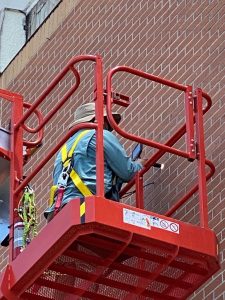
The building envelope – the physical separator between the interior and exterior environments of a building – plays a crucial role in ensuring occupant comfort, energy efficiency, and structural integrity. While often associated with architectural design and aesthetics, the structural engineering of the building envelope is a critical aspect that ensures its stability, durability, long-term performance and safety.
Understanding the Building Envelope
The building envelope comprises various components, including:
- Walls: Providing vertical enclosure and resistance to lateral loads.
- Roof: Protecting against weather elements and supporting snow and wind loads.
- Foundation: Transferring building loads to the ground and resisting soil pressure.
- Windows and Doors: Allowing natural light and access while maintaining thermal and air barriers. Openings may also need to be reinforced for bomb blast.
Each of these components requires careful structural design to withstand various forces and environmental conditions.
Structural Considerations in Building Envelope Design
Structural engineers consider several factors when designing building envelopes:
- Loads: The envelope must resist various loads, including:
-
- Dead Loads: The weight of the envelope components themselves and supporting elements.
- Live Loads: Occupant loads, furniture, equipment, and associated deflection.
- Environmental Loads: Wind, snow, rain, thermal, and seismic forces.
-
- Materials: The choice of materials significantly impacts the structural performance of the envelope. Common materials include:
-
- Concrete: Providing high compressive strength and durability.
- Steel: Offering high tensile strength and ductility.
- Masonry: Providing good thermal mass and fire resistance.
- Wood: A renewable resource with good insulation properties.
- Glass: Allowing natural light but requiring careful consideration of thermal and structural performance.
-
- Connections: The connections between different envelope components are crucial for ensuring load transfer and overall stability.
- Durability: The envelope must withstand environmental exposure and resist deterioration over time.
Engineering for Performance
Structural engineers employ various techniques to ensure the building envelope meets performance requirements:
- Structural Analysis: Using computer models to analyze the behavior of the envelope under various loads.
- Material Testing: Evaluating the properties of materials to ensure they meet design specifications.
- Detailing: Carefully designing connections and interfaces between different components.
- Construction Administration: Observing construction activities to ensure compliance with design documents.
The Benefits of Effective Structural Engineering
A well-designed building envelope offers numerous benefits:
- Enhanced Safety: Ensuring the stability of the envelope under extreme events like earthquakes and high winds and bomb blast.
- Improved Energy Efficiency: Minimizing air leakage and thermal bridging, reducing energy consumption for heating and cooling.
- Increased Durability: Protecting the building from moisture damage, corrosion, and other forms of deterioration.
- Occupant Comfort: Maintaining a stable indoor environment with controlled temperature, humidity, and ventilation.
Prioritize Your Building Envelope Inspection!
No one likes surprises. Having a building envelope inspection and report done only to realize during the restoration that the budget you were given is not enough to complete the project can creates unnecessary problems and possibly damage reputations. IEI takes a very holistic and thorough approach to building envelope inspection, forensic investigation, reporting and estimating of repair costs. Our staff includes engineers with construction experience including estimating and scheduling. We are also backed up by very reputable restoration contractors with real-time cost data. Contact us today!
